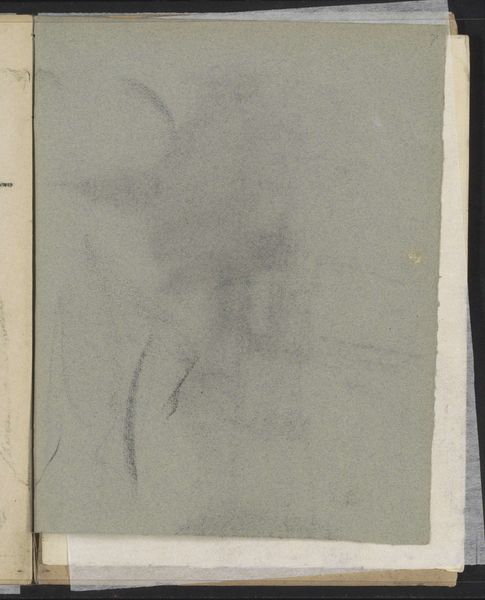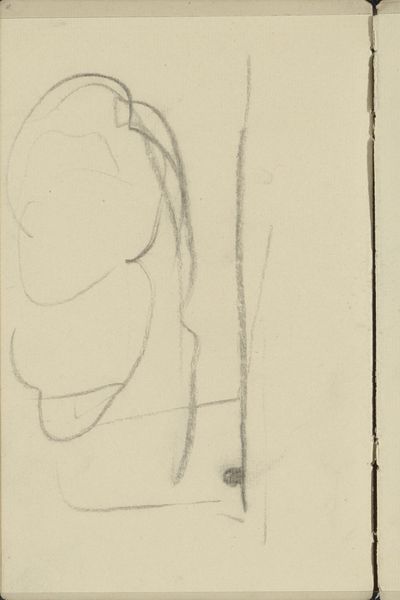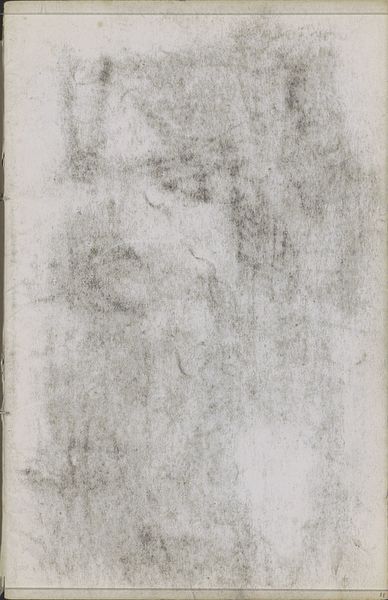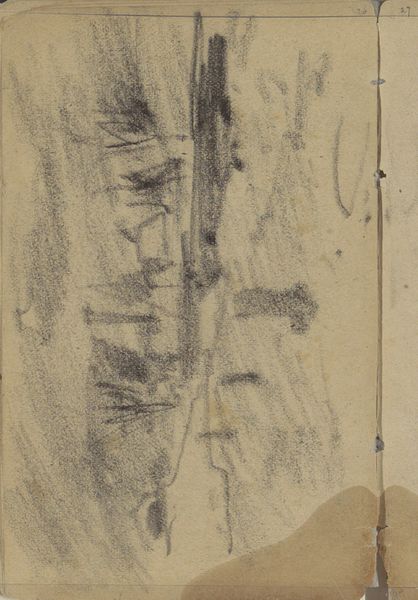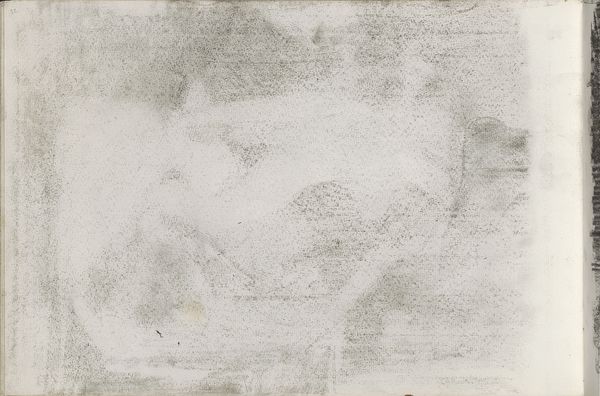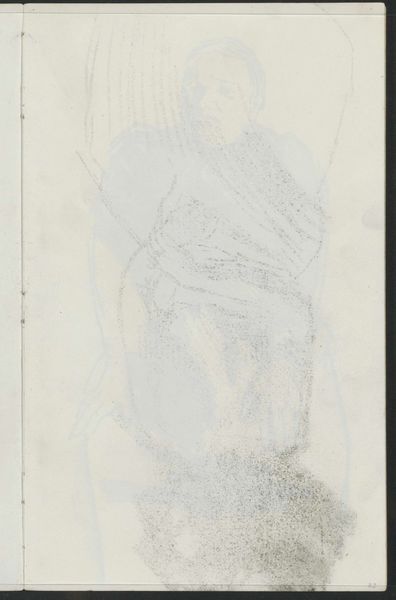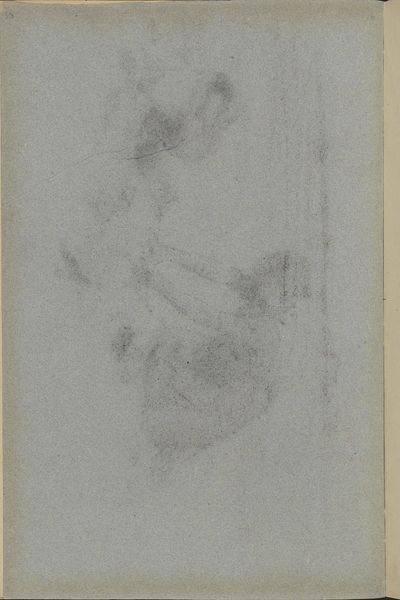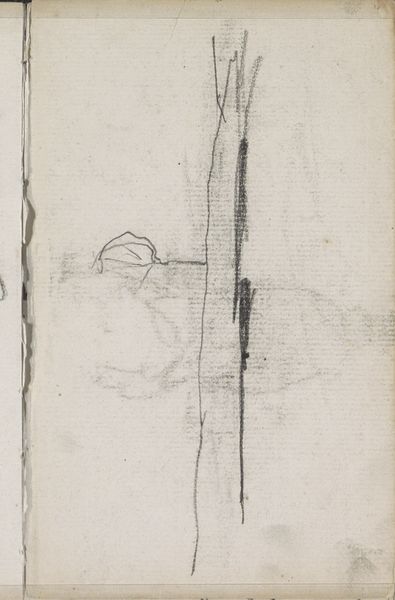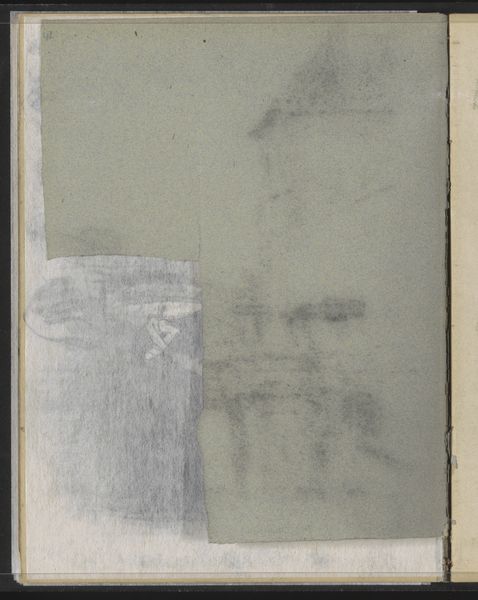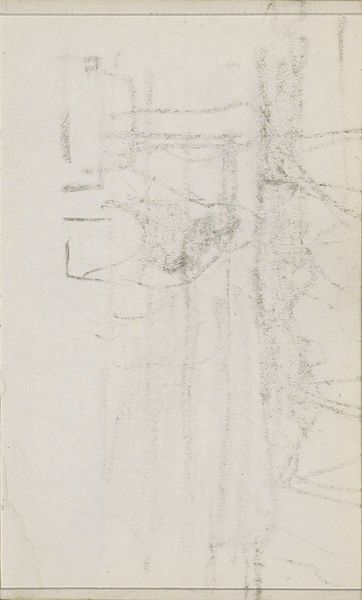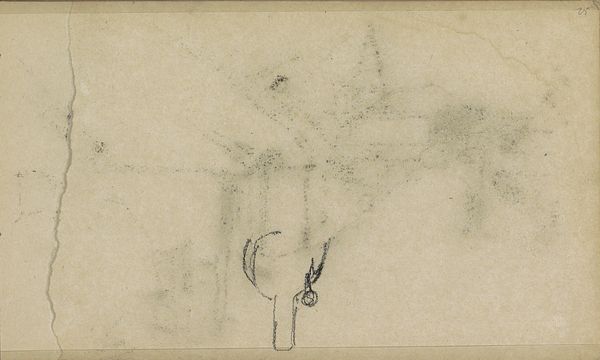
drawing, paper, pencil, graphite
#
drawing
#
impressionism
#
pencil sketch
#
paper
#
pencil
#
abstraction
#
graphite
Copyright: Rijks Museum: Open Domain
Editor: This pencil and graphite drawing on paper is called "Abklatsch van de krijttekening op pagina 45," created by Willem Witsen around 1884 to 1887. It has such a hazy, dreamlike quality to it, but it's hard to decipher what exactly is being depicted. What do you see in this piece? Curator: I see a document of process, where the act of reproduction itself, a tracing perhaps, becomes the art. Witsen seems less concerned with representing a specific subject and more interested in exploring the ephemeral nature of image making. Consider the sociopolitical context: the late 19th century saw the rise of mass media and photography, challenging traditional notions of art. Editor: So, you're saying this could be a commentary on the changing landscape of art due to new technologies? Curator: Precisely! The title "Abklatsch," meaning something like 'blot' or 'tracing,' points to a mechanical reproduction. The visible imperfections and the focus on process subtly question the authority of the original image. Were such themes gaining traction among artists who are trained to refine art? Editor: Definitely a different way of approaching artmaking! The loose, undefined shapes further emphasizes this sense of ambiguity, contrasting the detailed work prevalent at the time. Curator: Indeed. Also consider the institutional implications: a museum preserving what seems like a preliminary study elevates the artist’s process, perhaps granting equal importance to an artFORM beyond the painting in the period where impressionism changed so many things! It challenges our assumptions about artistic value. What's your impression now? Editor: It's interesting how placing it in that context shifts my perspective entirely. I initially saw an incomplete sketch, but now I appreciate its commentary on art's evolving role in a world saturated with images. Thanks! Curator: It’s all about understanding the artwork within its specific historical and cultural framework, recognizing its connection to broader social shifts. A nice object lesson.
Comments
No comments
Be the first to comment and join the conversation on the ultimate creative platform.
